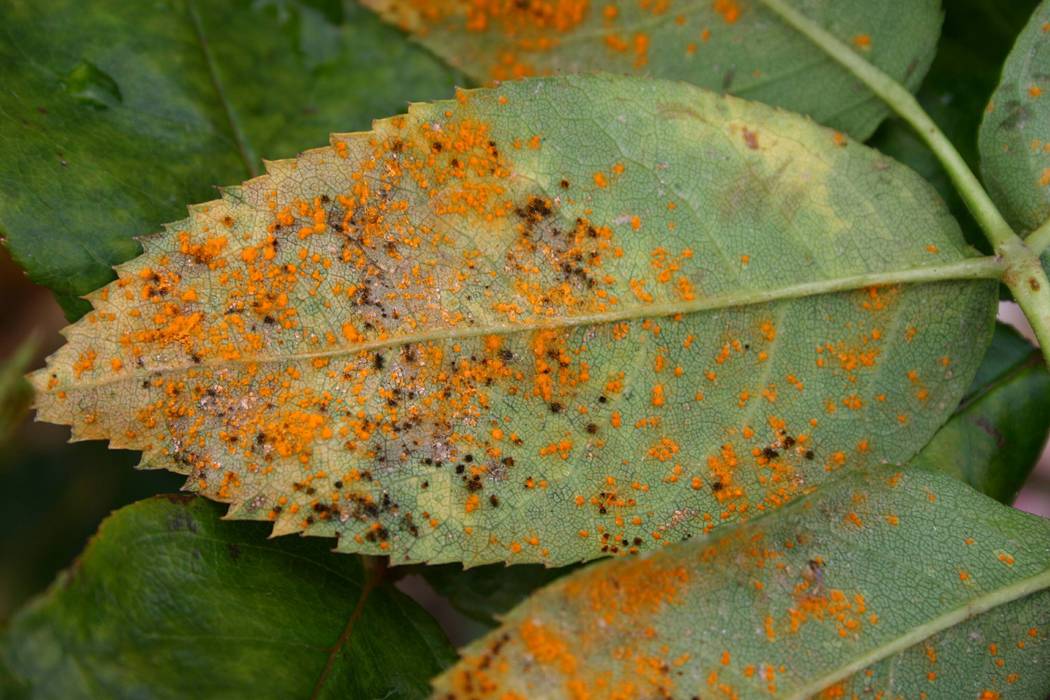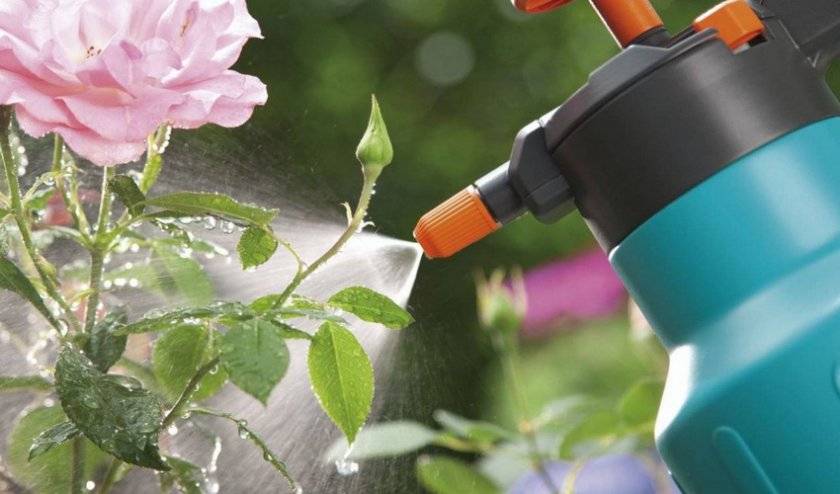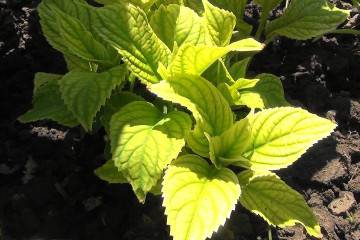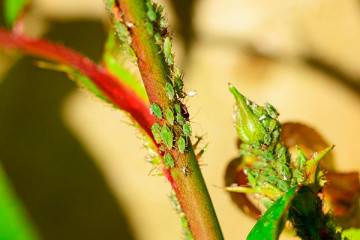Rust on roses - why it appears and how to treat it
Content:
Not all growers know what to do when reddish spots appear on the leaves of a rose. If you do not take action right away, the plant will begin to wilt, wither and may die. Rust is a fungal disease that poses a danger to the prominent representatives of the flora world. It must be treated immediately, destroying the affected areas. Only then will the rose quickly recover, it will delight with abundant flowering.
Rust on rose leaves
Plants are susceptible to various diseases, including fungal diseases. Infected flowers suffer from a lack of nutrients, their growth stops, they lose their attractive appearance. Rust begins imperceptibly with small yellowish spots on the back of the leaves. This is how fungal spores begin to ripen. If you do not immediately react, then the disease will spread to the entire plant, capture the shoots.
Why rust is dangerous
Untreated rust can kill the plant. Under the influence of fungi, the rose loses its chlorophyll. It is produced so little that the foliage becomes faded, nondescript. The plant loses strength, cannot resist various diseases, reacts sharply to any changes in the environment.
How and why does rust appear
Rust can spread to roses from newly acquired plants, therefore, when buying planting material, it must be carefully examined. Any stains, damage should alert. Diseased roses will instantly infect healthy ones. Fungal spores spread quickly, they are carried on the hands, with water, through the air, and move on the paws of insects. Also, the disease can affect country roses when there are unkempt rosehip bushes nearby.
The development of the disease is facilitated by the following conditions:
- high humidity;
- lack of fresh air. This is especially true for home flowers if the room is not ventilated. This does not mean that you need to put a rose next to the window. The plant must be protected from drafts, as well as from sudden temperature changes;
- heavy soil with a high density, too viscous. Roses need a breathable soil in which moisture will not linger. Therefore, it is recommended to add sand to the soil;
- lack of potassium in the soil;
- excess watering.
A healthy plant, which is cared for taking into account all the recommendations, is less susceptible to various diseases, in particular fungal. You need to carefully watch the roses.
How to identify rust
Rust on roses is not immediately noticeable. You can recognize the disease by taking a good look at the leaves:
- spots of yellow are barely distinguishable on the back of the leaf plate;
- after a few weeks, the active stage begins, the affected area grows. The spots grow, merge, small islets of red color are formed. You can see them even if you don't look specifically. Over time, they acquire a rich brown hue;
- the specks turn into bulging, fluffy-looking pads. They are bright orange and are clearly visible on the leaf surface. Inside them are the spores of the fungus.
Rust treatment methods
The sooner the plant is processed, the more chances it is to save it. Rust is a dangerous disease that is easier to prevent than to cure without consequences. You can act based on traditional methods of combating fungi or using chemicals. In the latter case, it is important to take care of your own safety, at least wear gloves. Wash your hands thoroughly after work. This is also necessary so as not to infect other plants, because fungal spores can remain on the fingers, palms and easily transfer to neighboring roses.
What to do first
Noticing rusty spots appearing on the leaves of the rose, you need to inspect the entire plant. If the flower has suffered badly, then it is better to get rid of it, especially if there are other roses nearby that can still be saved. It is also better to remove the topsoil. Fungal spores can end up in the ground. If they survive, then the flower will not be cured.
Treatment with folk remedies
If rust appears on the leaves of a rose, how to treat it to save the plant:
- Dissolve the shavings of laundry soap in hot water. Treat the diseased plant with the resulting solution. It is necessary that the medicine gets not only on the areas affected by the fungus. The procedure can be repeated every three days;
- chop wormwood and add water. Leave for two weeks to infuse the mixture. After that, you need to dilute it with water in a 1: 1 ratio. The resulting solution can be sprayed on a rose or water the ground. To reduce the preparation time of the medicinal mixture, it is recommended to boil the torn or chopped grass diluted with water for 7 minutes. It remains to cool the solution and then spray the plant with it;
- pour calendula and marigold flowers with water and boil for 5-7 minutes. After the solution has cooled to room temperature, you can treat the diseased rose with it.
Fungicide treatment
How to handle rust on roses:
- bordeaux liquid. She fights not only fungal, but also bacterial diseases. This is a solution of copper sulfate, which is also actively used in horticulture to protect vegetables and berries. For the first time, it is recommended to treat the rose with a 3% liquid solution. With a repeated procedure, carried out after 7-10 days, you can take a one percent solution;
- topaz. The drug is used to treat rust, prevent fungal diseases, including powdery mildew. The biological product quickly begins its action and will protect the plant for two weeks;
- strobe.The solution must be prepared strictly following the instructions. It is recommended to use it every 10 days. The use of only this drug can lead to the fact that the fungi will develop resistance to the active substance, therefore it is recommended to alternate the means. For example, first use strobe, and buy topaz for the next spraying.
Prevention of rust on roses
To avoid contamination of roses with fungal diseases, you need to adhere to the following recommendations:
- observe the watering regime. Eliminate waterlogging of the soil, prevent stagnation of water at the roots. A drainage layer will help to cope with this;
- provide the rose with soil that is permeable to air and moisture. Make sure that there is no clay in the soil. Be sure to add sand;
- feed flowers in a timely manner, providing the necessary trace elements;
- get rid of infected plants in time, remove damaged leaves and shoots. After processing a sick flower, wash your hands thoroughly;
- regularly inspect the rose, study the leaves on both sides. If spots, discolored spots and other signs of illness appear, do not postpone treatment;
- during work, for example, during planned pruning, use only a disinfected tool;
- upon detection of pests, engage in their destruction. Insects are capable of undermining the immunity of a plant, making it susceptible to fungal diseases.
Not all growers know why the leaves of a rose rust. Often the appearance of yellow-orange spots is explained by the poorness of the soil in minerals or inadequate maintenance. As a result, precious time is lost, and the fungi destroy the plant. The treatment of a diseased rose must be started immediately, it can be saved not only with the help of chemicals, but also with folk remedies.



















